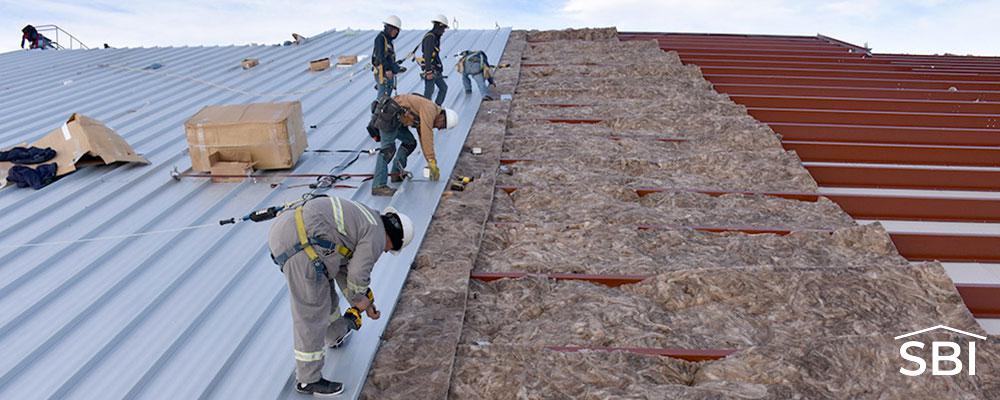What Is the Best Way to Insulate Under a Metal Roof?

Insulation For Metal Roofing
When you include insulation in your metal building package, you’re doing more than just lower your building’s energy bills. You’re also controlling noise, managing heat flow and preventing condensation, which helps your building maintain its structural integrity even better over time.
Estimates suggest that a building loses about 30% of its heat through its roof, so adding a layer of fiberglass insulation in your building’s roof is particularly advantageous and cost-effective. To perform well, your roof insulation must undergo proper installation, so here’s a closer look at what the process entails.
Installing Insulation Over Purlins
When installing insulation over the purlins of your steel building, you need enough to cover the distance from one eave to the other then cut off the excess fiberglass leaving the excess tab to be folded up on the ends. Keep in mind here that the width of the first run of insulation should exceed the width of the roofing panel by one foot. Often the first roll of insulation is 4’ wide while the standard screw down panel is 3’ wide. The additional rolls are typically 6’ wide. This allows access to the tabs and to help align the next insulation rolls.
Follow these steps to install your insulation:
- Temporarily attach one end of the insulation to the eave strut starting at the end wall using double-faced tape along the eave strut.
- Unroll the insulation over the purlins, keeping in mind that the vapor retarder should face the inside of the building. Once the first roof panel is installed the insulation can be unrolled on the roof panel and slid into place.
- Keep insulation taut while adding metal panels directly alongside it.
- Fasten the insulation at the other eave using the same method you did at the other end and then seal the tabs.
While we consider this the best way to insulate underneath your building’s steel roof, please note that there are other recommended installation methods for standing-seam roofs and two-layer insulation systems.


